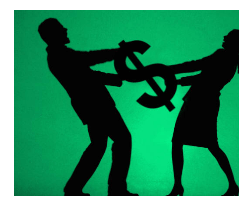 How do I approach a shoplifting incident? This question is asked of me almost on a daily basis by store managers and owners. We always give advice and best practices on how to deter a shoplifter by using EAS devices, but what should you actually do if you are faced with a shoplifting incident that you personally witness? When should you call the police? When can you legally detain someone? While not every situation is the same, there are some basic best practices to follow. Here’s what I train my managers and can be a great starting point for you.
How do I approach a shoplifting incident? This question is asked of me almost on a daily basis by store managers and owners. We always give advice and best practices on how to deter a shoplifter by using EAS devices, but what should you actually do if you are faced with a shoplifting incident that you personally witness? When should you call the police? When can you legally detain someone? While not every situation is the same, there are some basic best practices to follow. Here’s what I train my managers and can be a great starting point for you.
Establishing probable cause
Before you detain anyone for theft, you have to establish probable cause to do so. The best way to do that is to follow the LP industry’s “5 steps” to an apprehension. By following these steps, you always ensure that a detention is within the legal limits, which protects you and your store from any potential civil liability. Those steps are:
- SELECTION
You need to witness the suspect select something from your display shelf/rack or peg. This lets you know that the product is yours, and that the customer did not come into the store.
- DISPLAY INTENT
Displaying intent to commit a crime is a pretty big umbrella. A customer can display intent to permanently deprive you of merchandise is dozens of ways. Some of the most common are removing the item from its packaging, concealing it on their person, altering the pricing indicator, or even consuming the merchandise.
- MAINTAIN POSSESSION
The most common way a shoplifter will display intent is to conceal the item on their person, or maybe in a shopping bag or purse. It’s vital that they maintain possession of your product at the point in which you detain them. You can get yourself into some legal trouble if you detain someone that doesn’t possess any stolen property, so it’s imperative that you keep constant, unbroken observation on the suspect.
- FAILED TO PAY
This one is obvious. They have to not pay for the item. Pretty straightforward and simple.
- EXIT THE STORE
Once you witness that shoplifter select your property, conceal it in their pants and then walk all the way up front, past the registers and out the door, you have now established probable cause to detain that individual.
There are obviously various scenarios that can throw a monkey wrench in the gears, so it’s also very important for retailers to know and understand your state laws regarding shoplifting. These can usually be very easily found by going to your Secretary of State’s website and searching for the statutes governing theft. Even though I’m well versed in my state’s laws and have been doing this job for a very long time, I still keep printed copies of the law in my bag that I carry at all times. I also encourage you to reach out to your local law enforcement agency for help. Most departments have a retail liaison or similar position that can help you to understand exactly when a crime is considered to have been committed and what they expect from you as the retailer when responding to calls at your store.
Lastly, I implore everyone to always prosecute to the fullest extent of the law. Don’t give one person a pass. Show that your store will not be a soft target and that you are committed to keeping prices low for your customers. By prosecuting each shoplifter, you’re also committing to keeping your store safe for your customers and your employees. There’s a theory in law enforcement called “broken windows”. It goes something like this:
You walk past a house or building with a few broken windows. The windows go unrepaired and that leads to other window breaking. Before long, the building is covered in graffiti and squatters may take up residence. Drug use inside proliferates and it attracts others with ill-intent. Fires could be set inside. This “moth to flame” action starts trickling down to other buildings and houses in the neighborhood and soon the area is a criminal hot bed.
While this is only a theory and is a matter of great debate in the world of criminology, it should get you thinking. If shoplifters know they can get away with stealing from you, they’ll come back. Eventually, they will get brazen enough to physically assault a store clerk that may intervene. If you’re not prosecuting these individuals, word gets out that your store is an easy mark. You may eventually get robbed and ultimately shut your doors because your customers refuse to shop at a store they feel is unsafe. You can stop this snowball effect by taking pro-active measures to prevent those from shoplifting as well as taking the necessary action to hold those accountable to the law that do take from your store.


 The amount of calls reported by Walmart stores to the local police are staggering.
The amount of calls reported by Walmart stores to the local police are staggering. Yep, you probably are! The shoplifter that walked out the door with your $45 item cost you MORE actual money than $45!
Yep, you probably are! The shoplifter that walked out the door with your $45 item cost you MORE actual money than $45! I’m sure you’ve already read how shoplifters cost you money. It’s probably hard to digest the dire financial implications that shoplifters have on all of our businesses. Without adequate controls in place, you are putting your business and your financial well-being at risk, and honestly, you just can’t do that. That’s why we have to have a camera system and why EAS systems are a necessity and not just a “nice to have” technology. That’s exactly why we have to invest in exception reporting tools to help us identify criminal activity and why we preach the value of exceptional customer service in our stores.
I’m sure you’ve already read how shoplifters cost you money. It’s probably hard to digest the dire financial implications that shoplifters have on all of our businesses. Without adequate controls in place, you are putting your business and your financial well-being at risk, and honestly, you just can’t do that. That’s why we have to have a camera system and why EAS systems are a necessity and not just a “nice to have” technology. That’s exactly why we have to invest in exception reporting tools to help us identify criminal activity and why we preach the value of exceptional customer service in our stores. You know, we talk about the thousands of ways you, the small business owner, loses money to thieves constantly. Most of that is centered on shoplifters and boosters stealing your merchandise. We talk about that for good reason… it’s one of the biggest financial impacts to your business if left unchecked. However, there are so many other ways that your business can be targeted by criminals and some of them may appear so legitimate, that you would have no idea you were a victim for weeks. In that time, the criminal is long gone and you’re left paying for that theft out of your pocket. One area of training that is often overlooked in retail is check fraud. I’ll give you some advice on how to identify this in your store and protect yourself from vulnerability.
You know, we talk about the thousands of ways you, the small business owner, loses money to thieves constantly. Most of that is centered on shoplifters and boosters stealing your merchandise. We talk about that for good reason… it’s one of the biggest financial impacts to your business if left unchecked. However, there are so many other ways that your business can be targeted by criminals and some of them may appear so legitimate, that you would have no idea you were a victim for weeks. In that time, the criminal is long gone and you’re left paying for that theft out of your pocket. One area of training that is often overlooked in retail is check fraud. I’ll give you some advice on how to identify this in your store and protect yourself from vulnerability.
